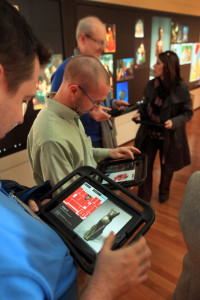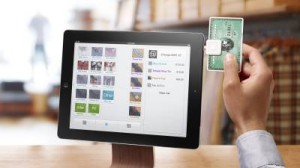Dear readers, welcome to part 2 of the SGPad trilogy! You can find part 1 here. Today we will be bringing you through some examples of how museums and restaurants use iPads. Apart from these, iPads can also be used for meetings and conferences. Of course, these are but a few of the many examples that you can find out there. C’mon, let’s check some of them out:
Museums
Museums are repositories of relics and artefacts that can be visited by the general public. Each relic and artefact holds its own unique story, which historians probably know like the back of their hands. However, not all of us have a knack for history. For the common persons who know little about history but have their interest piqued, a museum guide plays an important role in deepening that interest. In both Minneapolis Institute of the Arts and Cleveland Museum of the Art, this process is aided by the use of iPads.

In Minneapolis Institute of the Arts, iPads allowed the guides to use multimedia to enhance the experience of their tours for visitors. Commonly used to show photographs, maps and videos, researchers found that out of all these functions, high-resolution photos that can be zoomed in to see finer details of each relic or artefact are far more powerful as a tool. Moreover, the iPads also make it possible to video call artists or curators during tours. Thus, there is massive potential in the use of iPads that can be reaped to refashion the experience of a visit to Musuems.
Cleveland Museum of the Art leveraged more heavily on featuring all their art through postcard-sized photos on the iPads. Users can add photos to ‘Favourites’ and from there create their own personalized tours that also can be shared with other users. The museum allows visitors to use their own iPads or rent one from the museum. Personalisation promotes a more fitting tour repertoire for museum visitors that are more appealing than any other generic museum tours.
Restaurants
Other than as a menu, iPads are often used as a Point-of-Sale system by restaurants. In Singapore, many Japanese restaurants have integrated iPads into their ordering process.

Nonetheless, human error is inevitable in this industry, which places heavy reliance on physical touch between server and customer during ordering, serving and billing.The solution? Utilise technology to automate and reduce the probability of such errors occurring.
‘Boëhmer’ is a restaurant in Toronto, Canada, which uses the Pay at Table feature of the TouchBistro app. The Pay at Table feature is a service provided by the Paypal app. According to this article, this integrated app service solves 2 main bottlenecks in restaurants – ordering and paying. The app helps mitigate the problems caused by this botteneck by speeding up the flow of the payment process that in the same action reduces customers’ waiting time. The chance for error is also diminished when human mistakes is negated with the use of this app. Thus, enabling the restaurant to not only be able to serve more customers within the same time duration but also with enhanced accuracy.
All in all, it is evident that iPads helped these museums and restaurants boost their efficacy in enhancing the experience of visitors and customers. This benefit is also important during major meetings and conferences. If you want to satisfy your audiences’ thirst for greater engagement during such events, do check out Micepad.
Part 3 will be released next month so stay tuned and do subscribe for updates!
Xue Ming ☺



